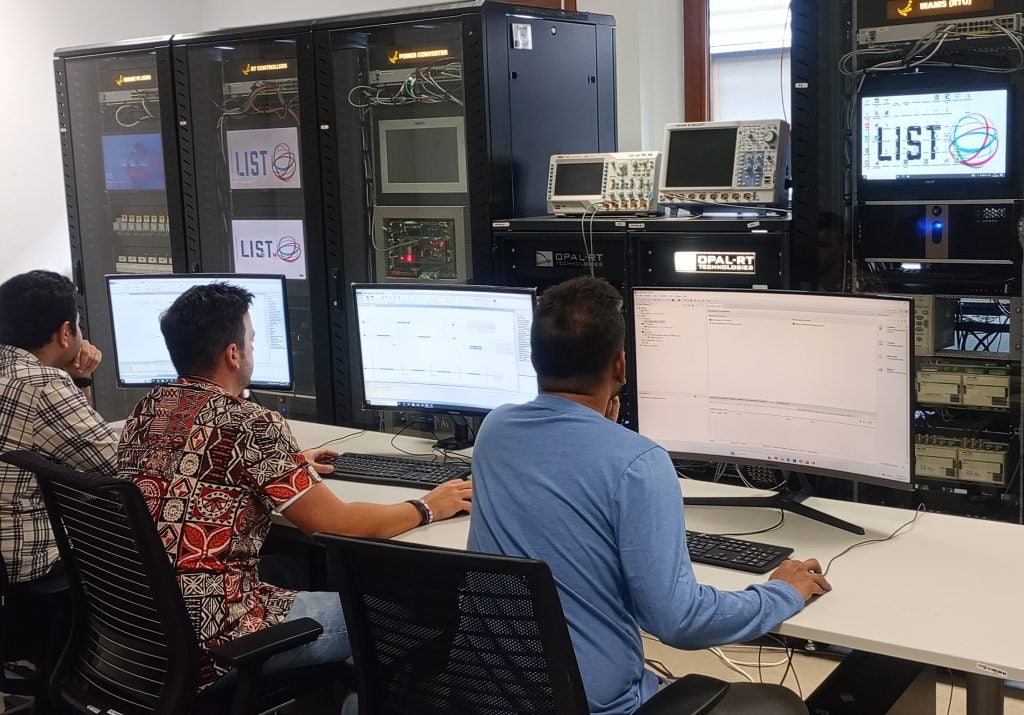Advancing energy systems through cutting-edge research and innovation
Luxembourg Institute of Science and Technology (LIST)
Energy
11 / 22 / 2024

The company
The Luxembourg Institute of Science and Technology (LIST) is a leading research organization driving innovation in digital transformation, environmental sustainability, and smart energy systems.
Within LIST, the Intelligent Clean Energy Systems (ICES) unit develops cutting-edge, market-oriented technologies to design clean, flexible, and intelligent energy networks. Their goal is to integrate diverse energy players, including consumers, producers, and regulators, into a transparent, adaptive, and resilient ecosystem.
The ICES unit focuses on several strategic areas, including multi-carrier energy systems, virtual power plants, resilient hybrid AC/DC networks, smart mobility and zero-energy buildings, and initiatives related to green economy regulations that encourage new business models aligned with sustainability principles, driving innovation across Europe’s evolving energy landscape.
The challenges
Transitioning to a renewable, distributed energy system introduces major challenges:
- Decarbonization: Shifting to renewable and low-carbon energy sources.
- Integration: Coordinating electricity, heat, transport, and storage networks.
- Digitalization: Ensuring real-time visibility, automation, and control across all system levels while leveraging AI and big data to improve forecasting, accelerate decision-making, and enhance system flexibility.
- Resilience: Maintaining grid stability amid increasing complexity through advanced automation and the development of local, user-driven energy markets that encourage innovation and adaptability.
LIST needed an advanced real-time simulation platform to test and validate wide-area monitoring, protection, and control (WAMPAC) systems, ensuring grid reliability and performance while enabling innovation in the transition toward climate-neutral energy systems.
The OPAL-RT solution
LIST deployed OPAL-RT’s OP4610XG simulator and HYPERSIM to develop a real-time Wide Area Monitoring, Protection, and Control (WAMPAC) platform within its RT-HIL facility.
Using HYPERSIM, the team modeled Luxembourg’s 11-bus transmission network, which includes renewable energy assets such as:
- A 4 MW PV plant
- A 1 MW battery energy storage system (BESS)
- A 2 MW multi-energy charging station
- Dynamic models of wind turbines, electrolyzers, and biogas power plants
The platform enables end-to-end data flow and control. Phasor Measurement Units (PMUs) deployed across the simulated grid collect real-time data, which is synchronized and transmitted to a Phasor Data Concentrator (PDC) for analysis. From there, advanced control algorithms are tested and deployed to Beckhoff PLCs, which send commands to switches, relays, and transformers to maintain grid stability and performance.
This hardware-in-the-loop (HIL) configuration mirrors real-world grid behavior, allowing LIST to validate control loops and automation strategies safely before field deployment. The system’s modular, scalable design supports diverse grid sizes and evolving energy configurations, ensuring flexibility for future research.
Precise 1 PPS time synchronization aligns every measurement and control action, delivering highly accurate, repeatable results for both academic and industrial applications.
The WAMPAC platform was developed as part of the HORIZON EUROPE project i-STENTORE, focused on optimizing energy storage and integrating hybrid systems to build a flexible, technology-agnostic European energy network.
The results
With OPAL-RT’s real-time simulation tools, LIST achieved a robust, flexible environment for large-scale grid research and testing.
Key outcomes include:
- Enhanced grid stability – Real-time monitoring enables rapid fault detection and response, improving reliability.
- Optimized grid performance – Continuous control and simulation reduce power losses and improve system efficiency.
- Accurate fault detection – Synchronized PMU data combined with HYPERSIM allows precise isolation of anomalies.
- Reliable automation – Beckhoff PLCs execute validated control strategies, minimizing manual intervention and human error.
The platform’s scalable and modular design positions LIST to expand its research and adapt to emerging technologies in smart grids and renewable integration.
Conclusion
Through OPAL-RT’s real-time HIL technology, LIST has established a state-of-the-art research and validation platform that bridges the gap between simulation and reality.
This collaboration supports Europe’s energy transition by enabling cleaner, smarter, and more resilient grids, paving the way for the next generation of sustainable power systems.





